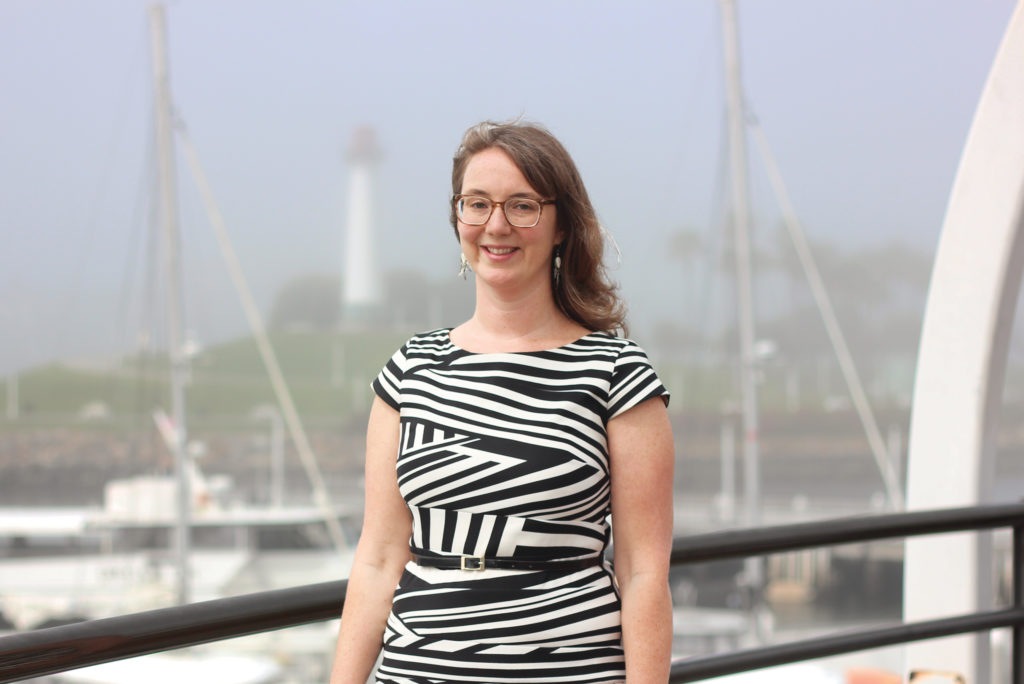California is famous for its sunny weather and abundant coastline. But this location, so favorable to the agriculture and tourism that has long played a significant role in the state’s strong economy, also puts it at a special risk in times of rising sea levels and a changing climate. “We’re a coastal city, so it is incredibly important for us to get smart about climate change and do it quickly,” Long Beach Mayor Robert Garcia told the Business Journal.
The City of Long Beach recently unveiled a first draft of its Climate Action and Adaptation Plan (CAAP), a document that lays out priorities in adapting to the effects of climate change and strategies to reduce the city’s impact on global climate. Threats identified in the plan include extreme heat, deteriorating air quality, drought and flooding. Steps to reduce the city’s climate impact include changes to its transportation system, its buildings and energy use, and its handling of waste.
The CAAP is part of an effort to address climate change on a local level. In 2015, Garcia became a signatory to the Global Covenant of Mayors, a climate-focused collaboration between city leaders from Albania to Zimbabwe. “This plan came out of my commitment to meet climate goals in the future and to be a part of this global coalition of mayors that is taking on climate change,” Garcia said. “I think the plan is doing a great job of doing that, and I’m really proud of the work so far.”
The preliminary plan was developed with the help of AECOM, a City of Orange-based consulting firm that was awarded the $400,000 contract in December 2016. Scientists, researchers and experts from the University of Southern California, the University of California, Los Angeles, the South Coast Air Quality Management District and the Aquarium of the Pacific contributed to the plan as part of a scientific working group.

“The CAAP is really just a roadmap of what needs to be done,” Alison Spindler, a planner with the Long Beach Development Services Department who serves as the lead on the CAAP project, told the Business Journal. “The next steps will involve a much more detailed identification and analysis of funding and financing mechanisms that can help us get there.”
The proposed actions will be costly. “We do know from our preliminary information that the costs are substantial, and that the city does not have the means to cover the costs of all those actions,” Spindler said. “But we also know that the costs of inaction are substantial as well.” With a list of action items on the table, she explained, the city and partnering agencies can now seek out state and federal grants to fund the implementation of the plan. She noted that an assessment district, where residents pay into a fund to be used for climate adaptation and mitigation actions, might be another option to offset costs.
Extreme heat is the climate threat expected to affect the largest number of residents most intensely. Additional tree canopies, increased public access to water and more prevalent use of “cool roofs” and “cool walls” are among the action items proposed to combat the effects of extreme heat. Cool roofs and walls are designed to reflect sunlight, reducing the amount of the sun’s energy that can heat up buildings.
One of the costliest climate impacts the city needs to adapt to, according to Spindler, is the rising sea level. “With sea level rise, the physical infrastructure that’s required to protect the coastal region will be costly and will definitely require a greater financial strategy,” she said. In the short-term, the plan suggests creating a new floodplain ordinance that would set safety standards for buildings and new construction in the city’s flood zone, and dune restoration along the city’s beaches. In the long-term, the plan goes as far as studying the option of “managed retreat for vulnerable shoreline infrastructure.”
“We’re looking at all options, all the time. Because as much as possible, we want to be able to protect and maintain our assets along the coast,” Spindler said. “But we have to consider all options as the information continues to evolve and as the science continues to evolve to really understand that. That area of the city is also under the state’s coastal commission jurisdiction, so we’re also compelled by the coastal commission to at least investigate that option.”
To help prevent a worst-case scenario, such as evacuating the city’s coastline, the plan also suggests a long list of steps the city government, local businesses and residents can take to reduce their impact on the climate. Among those are plans to establish “future emerging mobility zones,” where residents may access city-run carpool services, similar to a new program connecting Los Angeles residents to Metro stations in their area.
The concept first emerged in the process of Long Beach Transit’s Systemwide Transit Analysis and Reassessment (STAR), according to Spindler. “A lot of these groups are already doing great things,” she said. “[The question is:] how do we build off of that, how do we create that sort of citywide framework where it’s all mutually reinforcing, to have that collective impact approach?” Other proposed actions are an increased emphasis on electric-powered air travel at Long Beach Airport and a program for separating organic waste, such as green bins.
“Long Beach is not alone in this,” Spindler said. “I think we’re all recognizing that the past no longer predicts the future in the face of climate change and that we need to be prepared to keep ourselves safe, to keep our economy thriving and to invest in a greener economy for our future.”
The city will continue its outreach efforts to include residents in the process of finalizing and implementing the CAAP, Garcia explained. “People need to understand that climate change is happening. There is no other option but to prepare.”
